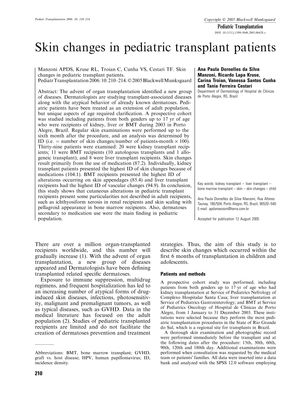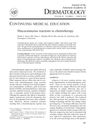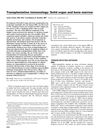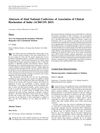Skin Changes in Pediatric Transplant Patients
October 2005
in “
Pediatric Transplantation
”
pediatric transplant patients kidney transplant bone marrow transplant liver transplant skin changes medication-related skin changes skin appendage alterations vascular changes ichthyosiform xerosis skin scaling pellagroid appearance cutaneous alterations dermatoses cosmetic changes skin assessments

TLDR Pediatric transplant patients often experience unique skin changes mainly due to medication use.
In 2003, a study in Porto Alegre, Brazil, followed 39 pediatric transplant patients, including 20 kidney, 11 bone marrow, and 8 liver recipients, up to 17 years old for six months post-transplant to observe skin changes. The study found that the most common skin changes were related to medication use, with an incidence density (ID) of 87.2, and kidney transplant patients had the highest ID for medication-related skin changes at 104.1. Bone marrow transplant recipients had the highest ID of skin appendage alterations at 85.4, while liver recipients had the highest ID of vascular changes at 94.9. Notable skin changes specific to pediatric patients included ichthyosiform xerosis in kidney recipients and skin scaling with a pellagroid appearance in bone marrow recipients. The study concluded that pediatric transplant recipients experience unique cutaneous alterations not seen in adults, primarily dermatoses secondary to medication use. The document also highlights the importance of preparing patients and families for potential cosmetic changes, the benefits of skin assessments before transplantation, and the need for education to manage these changes and improve quality of life.






